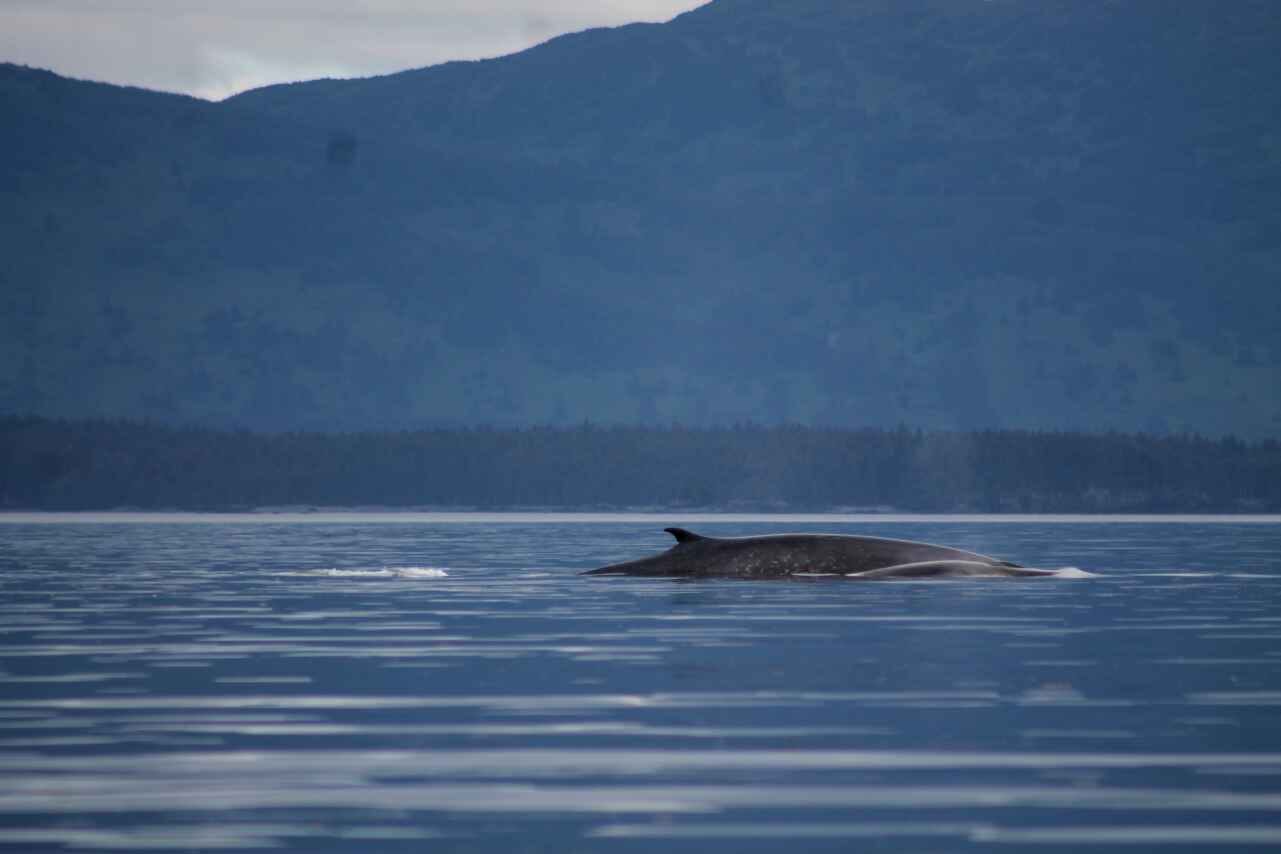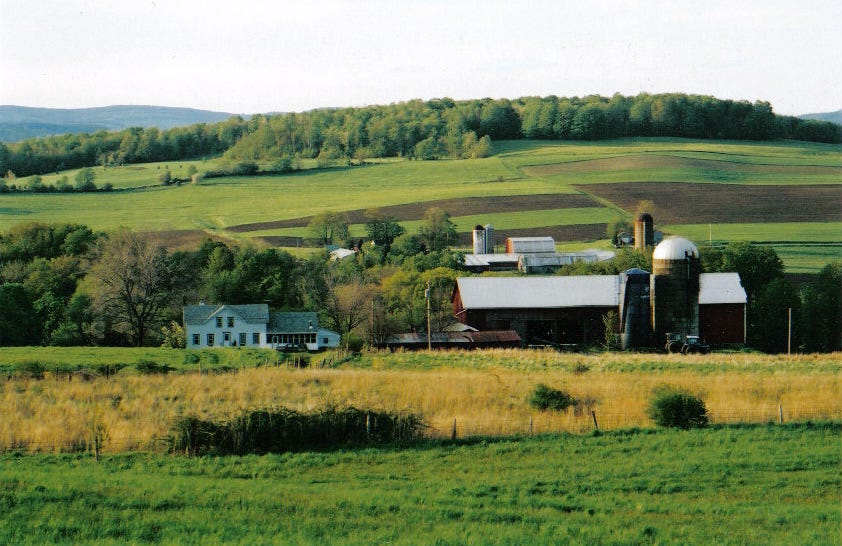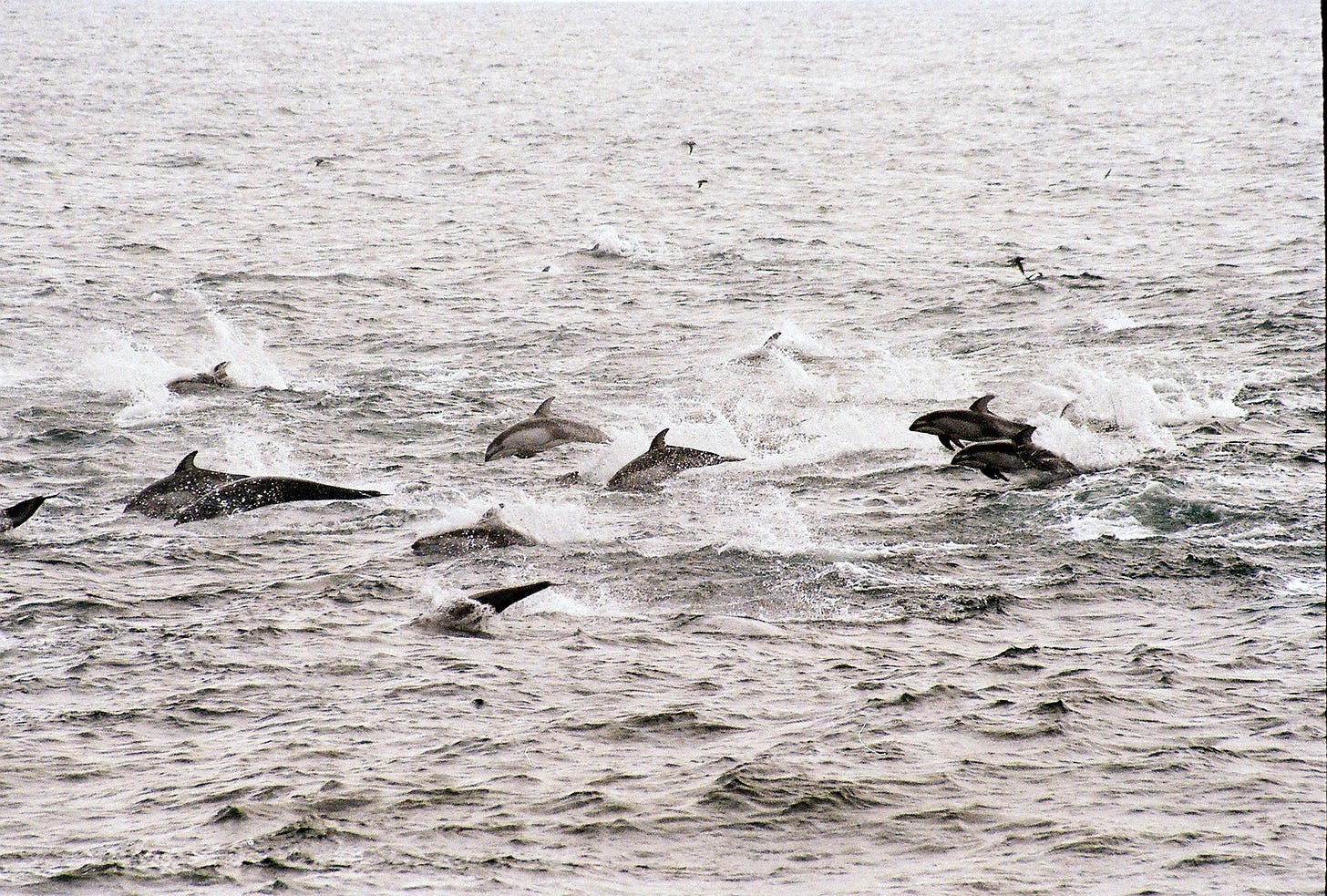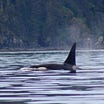Nature writer, n. A person who delights in paying attention, being astonished, and telling about it.1
“I was in a small skiff with the outboard turned off when a pair of fin whales, a mother and calf, swam close to our boat and spent a good amount of time in our vicinity before edging away again. I’m always in favor of hearing whales inhale the same air I’m inhaling..” ~ Mary Beth Rew Hicks
Welcome to Season 2 of the Reciprocity interviews. My inbox is full of treasure in the form of lovingly observed writing about place, encounters both wild and gentle, imaginative kinship and renewed reciprocity. These thoughtful, talented writers kindled in me the desire to learn more about them.
Today’s guest,
, is a marine biologist and writer on the Oregon coast. She is writing a memoir about women and whales. I’ve had the absolute pleasure of reading draft chapters of Mary Beth’s memoir for the past 18+ months. We first met over the phone, when my MFA mentor asked if I’d speak to her as a prospective student. As writers who care about the environment, we had immediate rapport.As Mary Beth writes, Sea cows belong to the Sirenians, named for the mythological seabird-women who bewitched sailors with song. She’s drawn to sirens, selkies, and the goddess Io who swam the seas in the form of a cow. Most of her writing is about women, whales, and cows. Most of it takes place in the two landscapes that form the hemispheres of her soul: the dairy farm where she grew up, and the ocean she lives alongside.
Why are you drawn to nature writing?
The first book that made me think, “I want to write a book like that” was High Tide in Tucson by Barbara Kingsolver. Nature is a character in each of her novels, poems, and personal narrative essays.
Why am I drawn to nature writing feels a little like asking why do I like to drink water? I grew up as just a part of the landscape among non-human animals and fields. All the books and stories I’ve loved are about landscapes and include non-human animals. Though I am a little wary of claiming the category of nature writer, I see how I fit, what with all the whales and fish and cows and farm fields I squeeze into my paragraphs. But then sometimes I might discuss teenage personhood or the three books I’ve just finished reading on abortion.
I’ve been trying to figure out why I get snagged on the category thing. I am a scientist and my writing often delves into science, but I am certainly not a Science Writer. You can find the science writing submission calls and how they oppose personal narrative. I write personal narrative, that much I know is true. I write about my relationship with the elements of nature, the whales and the cows, the sea and the tides, and I don’t erase myself from it. Some nature writers remove themselves from the page, some seem to believe it’s preferred, it’s more pure (and that purity is aspirational). To be honest, I like narrators who appear in their own nature writing. I’m not that big on purity.
But I’ll also never write stories where I erase the landscape from the page.
The first paragraph of my About page says
The sea cow was a peaceful herbivore who swam in the Pacific Ocean until it was hunted to extinction in 1768. The sea cow taught us what happens when we assume a species is inexhaustible, though we have not yet learned. As a scientist studying marine species, I often feel my main occupation is the documentation of extinction. I am finding that in my work as a writer, I spiral back to this objective as well.
So that’s what I’m doing here. As Leslie Jamison says, “follow your obsessions.” As Pam Houston says, “you have to invite the subconscious to the art-making party.”
How does writing about nature affect you, in your work or personal life?
Because I work as a fish biologist, I have been trained that scientists should stay in their lane, and at all costs they must avoid activism. I have been trained that objectivity is of highest importance when studying non-human organisms. I have been trained that anthropomorphism is folly. But as a writer, I write about what needs my attention, which is activism. I write with empathy toward non-human organisms, at the expense of objectivity. I write knowing that the graver mistake is not to admit the obvious kinship I share with non-humans. As a writer I reject all of that rigid training, and embrace the attempt to seek empathy, to effect change. I guess you could say writing balances me out in all the best ways.
Because I write at the intersection of nature and violence a lot, such as the ways women and whales are abused, taken, harmed, my writing often leads me to deeper understanding of what I am trying to say. (Because sometimes I’m pretty unclear, even traumatized, when I begin, and seeking, and emotional, and not sure where it will all lead.) In revision, I am asking whether it is true yet, asking whether there is another layer beneath what I’ve already written that is what I actually came to the page to write. Writing consciously hones my values and beliefs; not for them to become weapons I use to bludgeon. They are more like shapeshifting color-changing expanding spiraling alive concepts that I am allowed to change my mind about, to subtly shift my perception about, as new information makes a connection within my mind. So I think writing about nature affects me by integrating and expanding my mind and heart.
While outside, have you ever experienced feeling small, lost or in danger?
I have felt both small and in danger (though I don’t recall ever having been fully lost). I spent several years in my early twenties as a schooner deckhand and weathered a few nasty storms at sea. As much as I feel at home on the ocean, I learned so much respect out there. The worst storm was at night when we were moored to a Coast Guard mooring off the Channel Islands with a group of eighth graders aboard. The wind and sea picked up so much in such a short time that we dragged the mooring ball (this is basically unheard of). We had to cut our line and try not to get blown ashore. Our engine was not powerful and could barely fight the combined wind and currents, and it was rather too deep to set our anchor. The seas were sloshing over our rails and across the deck, so we were wearing harnesses to clip in to a line if we needed to move forward or aft on deck. And we did need to, to get every inch of sail tucked in and lashed down to stop it from catching wind and pushing us onshore. The eighth graders, we let them sleep through it below decks.
I’m team bear when it comes to the man v. bear discourse, in that I’d rather meet a bear if I were hiking alone than an unknown man, but I also have felt that prickly neck feeling of seeing a bear or a cougar on a hike, and I’m appropriately scared of them, too. Or maybe, appropriately respectful of their skillset. With men it’s that Monsieur-Tout-Le-Monde is impossible to identify on sight. It’s that you’re only safe until you’re not.
Feeling small in nature is more often positive for me, not a feeling of unease. This July I was in a small skiff with the outboard turned off when a pair of fin whales, a mother and calf, swam close to our boat and spent a good amount of time in our vicinity before edging away again. I’m always in favor of hearing whales inhale the same air I’m inhaling. (I feel obliged to say: In the boat with me were two good men I know and trust.) And a year earlier it was not fin whales but three killer whales, again viewed from an eighteen-foot skiff and not bothering to keep much distance from us. My little profile picture here is one of those orcas. These are life highlights I’ll keep collecting as long as I’m able.
What’s a favorite memory of nature from your childhood?
On the margins of my family’s upstate New York dairy farm fields are many apple trees. My two brothers and I spent hours on end under the boughs, finding “caves” in places where multiflora rose and wild grape had engulfed branches and woven perfect hiding places. We gathered flat field stones to use as dishes and mix concoctions of berries and seeds, inviting each other across the gully and over the hill to whichever cave we’d claimed for pretend feasts. We got lost in our imaginations, only emerging when Mom honked the minivan horn to summon us for dinner. We raced downhill through the hay field full tilt, grass-stained knees, muddy sneakers, hair snagged with leaves and twigs, arms raw with stinging nettle and rose thorn scratches.
Then, for one week each summer, we camped in Fish Creek Park on Saranac Lake in the Adirondacks. That’s where I fell in love with boats and being on the water. Like the farm version of nature memory, the lake trips are a happy blur more than a specific memory, but I loved taking canoe trips to Floodwood Pond with cousins and aunts and uncles. The way the light transmits through water too shallow for motorboats, so you can see water lily roots extend from leaf all the way down into the mud, and listening to the “silence” of flowing water, birdsong, and family chatter, these are the type of sense memory I carry from those lovely trips.
What do you hope for, for your writing?
asked a question in one of her Crooked Roots pieces recently that helped me articulate one of my hopes for my writing. She asked her readers:“What is one thing you look for when you read a story/essay/book with an outdoor theme?”
My answer was:
“One thing I look for in nature writing is to get beyond facts and make me feel something.”
By delving into the physical/sensory landscape I can counterintuitively tap into emotion much more than if I stay cerebral. I’ve also worked hard at getting away from having much of an agenda when I write. I am not building a case or persuading the reader of something.
I have big dreams for my writing, if I take this as a goals question. I have a nearly complete memoir manuscript that I’d like to find a home for in the world. It’s had the benefit of substantial nurturing by fabulous mentors and many wonderful writing group friends and it’s almost ready. I know there is room for one more book about women and whales. And yes, I hope it makes someone feel something.
A writer or other creative artist who makes you hopeful for humanity and the earth.
I’ll start with “godmother texts” as I’ve heard Leslie Jamison call them. Ones who inspire by the longevity and sustainability of their craft. Barbara Kingsolver, Jane Goodall, Eva Saulitis (if you haven’t read her but you like women and whales… finding her work was a touchstone of my writing arc). Pam Houston, Lidia Yuknavitch, Robin Wall Kimmerer.
If not godmothers yet, they will be considered so soon enough: Toni Jensen, Sarah Smarsh, Elizabeth Rush, Alexis Pauline Gumbs, Terese Marie Mailhot, Doreen Cunningham, Andrea Gibson, Clare Boyles, Sabrina Imbler, CJ Hauser.
None of them seem to have given up hope, though they, like me, seem undeluded about where things stand. I’m drawn to their commitment to the natural world and that they have a personal stake. They’re not nature writers from the olden days spending a year living on their trust fund in a cabin, or conquering a landscape (scale a peak, cross an ocean, place some piece of nature into submission under their dominance). They include whatever’s going on with their health and home life, including violence they experience. They defy taboos about mental health and women’s lives and race and class and talk about it all. They’re on intersections. They’re women with context and narrative and life and experience. I’m drawn to how these minds make sense of the world and put it into words with such care.
Here on Substack, my favorites to read lately are not “pure” nature writing but they do give me hope for the same reasons. They don’t divorce life from landscape. They don’t divorce landscape from life. They’re mad about what this administration is doing to harm the environment, and women, and communities, and trans people. Each concern is not tucked neatly in its own silo. Sarah Quirk “Reminders for humans,”
“between two seas,” “Come as you are,” “Life at the bottom of the canyon.”Finally, Torrey House Press has a fabulous essay series of invited nature writers called That Thing With Feathers, which I highly recommend for a dose of hope. The recent surge of essays starts with Linda Hogan here.
Each season, we donate 30% of paid subscriptions to a worthy environmental cause. This season, it’s the Center for Humans and Nature, where they explore what it means to be human in an interconnected world. Track past and current recipients here.
What did you enjoy most about this essay? I’d love to hear from you. Or share it with others by restacking on Notes, via the Substack app. Thanks!
Notes and links
If you’d like to participate in this interview series, please DM me on chat, or reach out via email: gabrielli-dot-julie-at-gmail. Find previous interviews here.
For more inspired nature writing and artwork from the best of Substack, check out the articles in NatureStack journal.
In further service to Substack’s nature writers,
curates this lovely directory of nature-focused writers:thanks, Mary Oliver












Mary Beth and Julie thank you, I was captivated from the very first line "The first book that made me think, “I want to write a book like that” was High Tide in Tucson by Barbara Kingsolver" for me, almost every other book she's written too!
Loved this interview, and reading through the comments-
first: Mary Beth, your insights and experiences resonate with my world: childhood in the Northeast, attachment to the natural world & marine mammals; but more than that I admire your ability to write about these things with depth, insight and sensitivity.
Adding to the comments of others- love a lot of Barbara Kingsolver's work but not all. Barry Lopez a personal hero. Have just finished reading Horizon, his last book, written as he was dying and feel even more bereft at his passing.